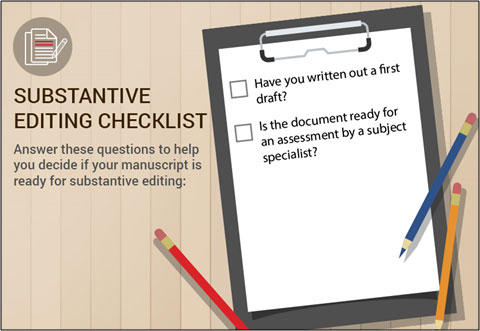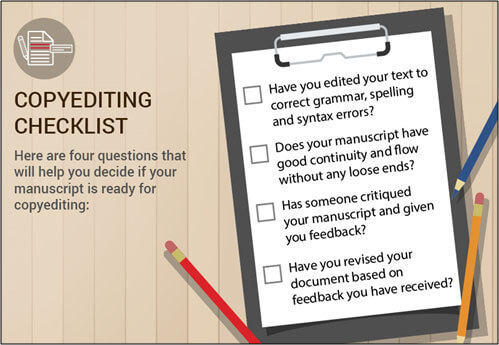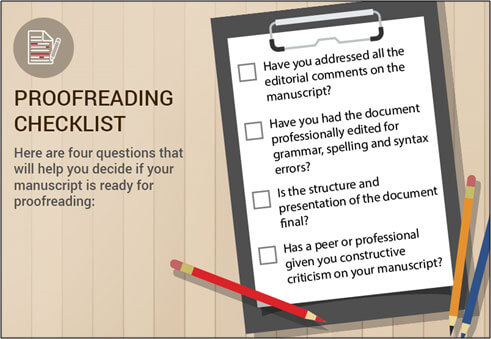Copyediting vs. Proofreading vs. Substantive Editing – What’s the Difference?
Copyediting vs. Proofreading vs. Substantive Editing – What’s the Difference?
Line edits, copy edits, proofreading, substantive edits, manuscript critiques… it is enough to make anybody’s head spin. More so for authors trying to decide what kind of service they need at what stage of their article, book or manuscript. While the struggle to understand the various kinds of editing services is one that leaves many writers scratching their heads in bewilderment, it is not rocket science. It is a popular editor’s conundrum and most folks can use a quick rule of thumb to get it right. Once you have read this short post, you will never again be confused about the different content editing processes that go into copyediting, proofreading and substantive editing.
Here it is:
The view from 30,000 feet is substantive editing, the view from 500 feet is copy editing, and the view from the ground is proofreading. Let’s go on a ride.
The 30,000-foot view: substantive editing
Focus: organization of content
This is the big picture view from the window of an airplane flying at 30,000 feet (the typical cruising altitude of a commercial jet, also known as “Flight Level 300”). There is a good view of the clouds, large swathes of land, rivers and lakes, but it is too high up to see much of anything with precision. Applied to editing, this means that substantive editors review an entire manuscript from a broad perspective. The focus is on the finer points of overall structure: chapter or paragraph organization and transitions – the big picture – from beginning to end. They work very closely with authors to suggest improvements in organization, structure and consistency, maintain a single authorial voice, and ensure that content, language, style and presentation are suitable for the manuscript’s intended purpose and readership.
When do I need substantive editing?
Substantive editing is ideal if you need a big picture analysis on the logical flow, accuracy of the content, inclusion of information, and coherence of the arguments. An editor will prepare a broad assessment of your manuscript. Here are some examples of the questions and comments at this level of edit: “Why is this important?” “Is there more data to support the impact of your measures?” “How does this fact relate to the hypothesis in Chapter 6?” “Have there been any publications regarding this to ensure the rhetoric you describe is turned into reality?” “This passage contradicts the argument on page 12.”

You nailed it!
“When you write a book, you spend day after day scanning and identifying the trees. When you’re done, you have to step back and look at the forest.”
― Stephen King, On Writing: A Memoir of the Craft
The 500-1000-foot view: copyediting
Focus: grammar and spelling mistakes
Hover over a place at 500 to 1000 feet on a helicopter, and you will be able to clearly recognize buildings, bridges and roads. The important details are clear to the eye, with the benefit of seeing it from a higher perspective. Copyediting is looking at each line of the text with a view to correcting grammar, spelling and punctuation, rewording awkward sentences, eliminating verbiage for conciseness, checking sources for first and last names, ensuring that photos match the copy and numbers add up in the graphics. Copy editors exchange passive verbs for active, add transitions between and within paragraphs, highlight style issues and inconsistencies in capitalization, hyphenation, and number formats, and ensure adherence to style guidelines.
Copyediting can be heavy, medium or light, depending on the amount of work. Heavy copyediting can stray into the boundaries of substantive editing when it involves changes to structure. This is especially true when working on manuscripts authored by non-native, non-fluent English writers. In such cases, the content might be brilliant from a developmental perspective, but sentences are cumbersome, paragraphs need better organization, and word choices are suboptimal. Medium and light copyediting do not require structural changes, and focus entirely on improvements like correcting wordiness, punctuation and subject-verb alignment.
When do I need copyediting?
When you need an in-depth edit of the manuscript to cut down on wordiness, tighten the language and create a better reader experience. Editing copy for spellings, grammar and punctuation returns a paper free from language errors. Some examples of copyeditors’ comments are: “Note that the terms “copy editor” and “copyeditor” have been used interchangeably throughout the manuscript. This has been revised for consistency.” “Kindly note my revision. You may also use “Analyzing” or “A study of” instead of “Understanding.”” “Please check that I have accurately understood your meaning – “collect” means to gather/bring together, while “correct” means to rectify/resolve/repair.” “I have revised this term after verifying its usage. This is more commonly used than “behavior observation method.”

You nailed it!
“You write to communicate to the hearts and minds of others what's burning inside you, and we edit to let the fire show through the smoke."
― Arthur Plotnik, former publishing executive, and author of eight books
The view from the ground: proofreading
Focus: typographical errors
This is the view from the street level. With a microscope. Once a manuscript has been designed, a proofreader goes over everything in the proofs one last time. No matter how skilled a copyeditor is (and even if they are an excellent proofreader), the proofreading stage approaches a manuscript with a different focus, and the two tasks are normally done separately. You could even say they use different parts of the brain. Copyeditors are focused on grammar and style, and might overlook the extra space or missing quotation mark. Proofreaders on the other hand spot the smallest typographical and mechanical errors such as spelling mistakes, extra or missing spaces, missing or double end punctuation and formatting issues in design and layout such as inconsistencies in margins, fonts, numbering, and so on.
When do I need proofreading?
After the manuscript has come back from editing, and you have taken care of all the comments and corrections, there is one final step: Proofreading. This is done on the actual “proof” of the manuscript in its final layout – literally one step away from publishing. Proofreaders match edited copy to the proof to catch missing pages, omissions, accuracy of page numbers, table of contents, and those stray typographical and mechanical errors like hyphenation breaks or too much or too little word/line spacing. Proofreaders also scan book covers to make sure no embarrassing typos or mistakes have crept in. A proofreader is not an editor however, and if there are too many spelling mistakes, they will return the proof for another round of copyediting.

You nailed it!
“Read your paper backward, sentence by sentence, as a final proofreading step. This technique isolates each sentence and makes it easier to spot errors you may have overlooked in previous readings.”
― Claire B. May Gordon S. May, author of Effective Writing: A Handbook for Accountants
So there you go, the editing process is probably a lot clearer now. Most documents will benefit from copyediting and proofreading, not copyediting or proofreading (and it is never ever editing vs proofreading, as some would have it). Like everything else, the boundary lines between these tasks can sometimes blur. Proofreaders don’t ignore misspelled or incorrectly used words (corpse instead of corps) that a copyeditor missed. And substantive editing sometimes overlaps into heavy copyediting territory which can mean almost a complete rewrite at the sentence and paragraph level. However, the next time someone tells you it’s all the same thing, you can tell him or her it's all about perspective. The view from the window is quite different when you are flying above the clouds in an airplane, buzzing over treetops in a hovercraft or driving on a highway in a car.
Our promise to you… You must love every aspect of our quality and service or we insist on refunding you in full—cheerfully and without hesitation.
Need publication advice?
Start your publication journey now
All our editing plans come with 100% confidentiality and quality guarantee.
